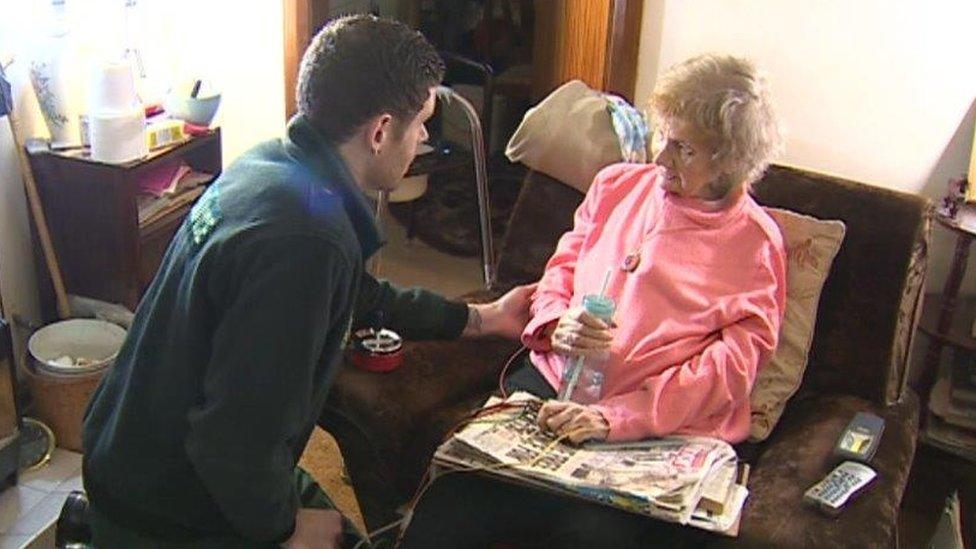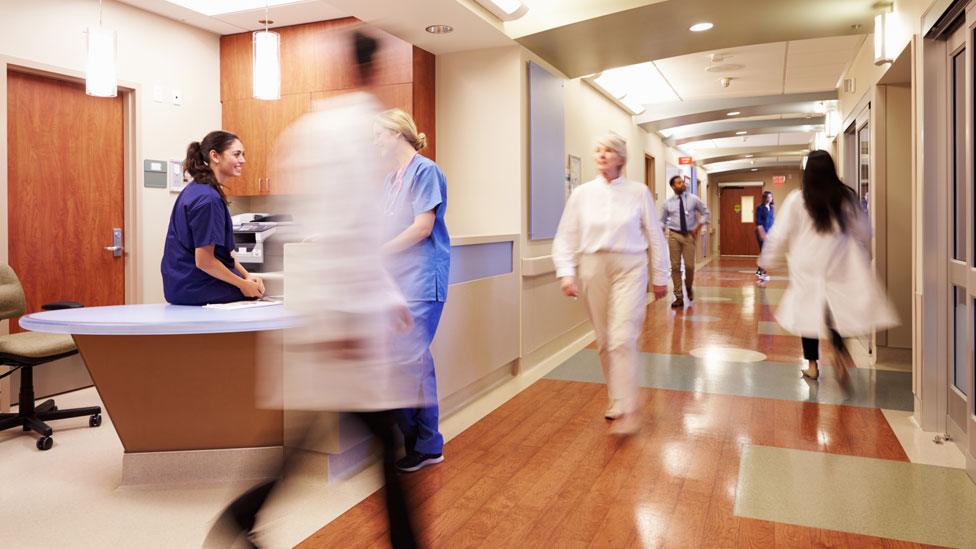Welsh Ambulance Service braced for winter peak time
- Published
Berwyn Owen-Jones is among the advanced paramedics trying to treat more people at home
People with non life-threatening emergencies can expect to wait longer on the busiest winter days, the Welsh Ambulance Service has admitted.
The service is traditionally at its peak between Christmas and new year.
Chief executive Jason Killens said that it was "regrettable" some patients could face longer waits as it prioritised urgent cases.
But using more advanced paramedics aims to cut pressures on A&E units across Wales.
Mr Killens said lessons had been learned from last year and extra staff were being drafted in.
He added: "The reality is we will be busy across Christmas, the new year, and into the winter period.
"We will see peaks in demand, and some days that could be 10 or 20% in excess of what we'd normally see.
"And on those days, it's regrettable some patients will wait longer while we go to those patients who need us first."
Last winter, bad weather and the worst flu season for nearly a decade meant both health and social services faced what was called a "perfect storm of pressures".
The number of calls graded amber - less serious - peaked in December 2017 at nearly 25,000.
More than half of those patients waited more than 30 minutes to be seen during February and March, coinciding with the bad weather.
The average response time rose by 15 minutes to 58 seconds compared to the previous winter.
The ambulance service's three contact centres normally receive about 1,000 emergency calls a day.

What is being done differently this year?

Berwyn Owen-Jones treats Beatrice at her home, preventing an unnecessary trip to hospital
More advanced paramedics
These paramedics have specialist training to assess patients' needs to a higher level.
In a trial in north Wales, they cut the proportion of patients needing to be taken to hospital from 70% to 30%.
There will be 10 more in south and east Wales and 10 in central and west Wales.
"It makes a significant difference - not only to the patient, so they get appropriate care in their home but it also helps the emergency department, so those patients who really are seriously ill or injured can be seen in a more timely way," said Mr Killens.
Berwyn Owen-Jones, an advanced paramedic covering much of north Wales, said this drop in admission rates meant "we have more ambulances able to be deployed to more serious calls".
He added: "Spending an hour and a half with a patient at their home might save four hours waiting outside the doors of an A&E department."
Falls response teams
These help those mainly elderly patients who are not injured, but still need help getting up.
This means they will not have to wait for an ambulance to reach them, which frees up emergency vehicles.
A paramedic and physiotherapist, based in Blackwood, go where there is a potential injury - but it still saves on ambulances being called out.
St John Ambulance is also involved in helping with non-injured fallers.

A review of the NHS's response to last winter found an issue of ambulances parked up outside of A&E, largely caused by GP referrals of patients - and a second wave of pressure outside hospitals in the evenings after surgeries closed.
Mr Killens said there was not one solution and it was important patients realised the service was targeting those most in need.
"My message to the community is - if you believe you're in genuine need of emergency help from the ambulance service, dial 999 - we'll then decide what care is appropriate," he said.
"We will increasingly look to provide care which is appropriate to you - rather than just take you to the emergency department."
- Published13 November 2018

- Published25 October 2018
